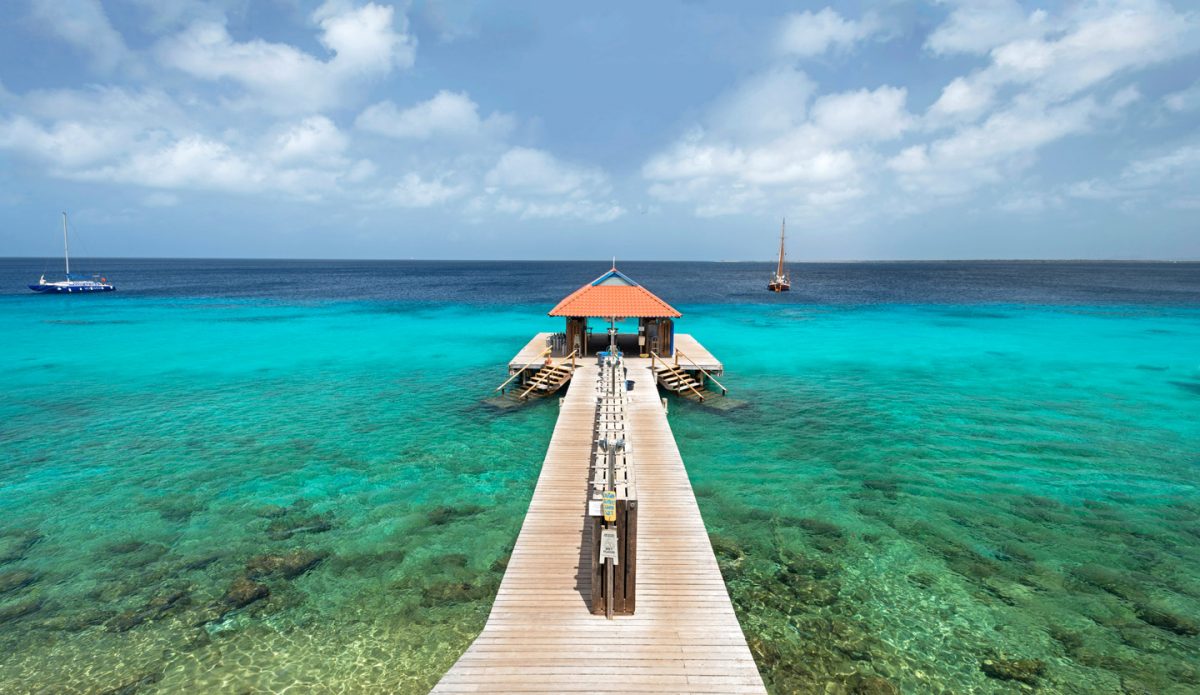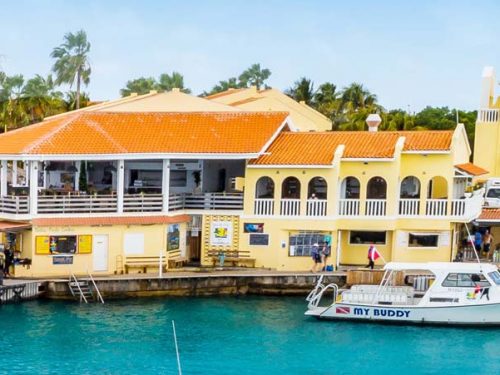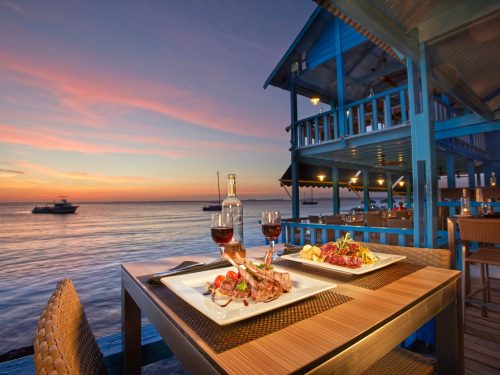Bonaire is home to a population of about 10,000, and is often referred to as Divers Paradise which is even the catch phrase printed on license plates around the island. For those looking to travel to Bonaire, consider visiting during the fall and winter when there is slightly less rain. Temperatures are also slightly lower during the winter, making the hot Caribbean climate a little more bearable. This small island is serviced by the Flamingo International Airport that receives many flights from the neighbouring islands of Curacao, Aruba and Jamaica, as well as from Houston and Dallas via San Juan.
Although a beautiful destination to explore, Bonaire has not fallen to the fate of becoming a full-blown tourist attraction, which means crowds are sparse all year, making for very natural experiences. Bonaire’s coastline is entirely protected by a large marine park, meaning all the corals that fringe the island’s coast are kept pristine for divers to marvel at. This, in conjunction with the smaller crowds all year means amazing viz levels: in some places up to 30 meters.
There are upwards of 90 dive sites that surround the island giving divers a huge selection to choose from. There are two main regions in which the majority of the sites are located. Just north of the capital city Kralendijk, there are several groups of sites sheltered from the open waters by the inside crook of the island. Offshore a little further, divers will find the tiny islet of Klein Bonaire, which is also home to many dive and snorkeling sites and can be reached by boat only. Due to the nature of the island, being the peak of an underwater mountain itself, divers do not have to go far offshore to encounter mass amounts of coral, as the coral all fringes the island itself. This means that conditions are perfect for some spectacular shallow dives, as well as several sheer wall dives.
Most scuba diving vacation packages include a pick-up truck for your personal use. Some dive shops have “drive thru” tank fill stations, so your shore diving opportunities are unlimited. All dive sites around the island are marked by yellow rocks along the road. You just pull up, don your gear and off you go.
With a wide range of diving opportunities, Bonaire has a little something to offer for everyone. Typically, the more northern dive sites have stronger currents as they are more exposed to the open sea. These sites are geared more for intermediate to advanced divers, due to the nature of the current, as well as the ranging depths. La Dania’s Leap is a great drift dive site, as divers plunge in to the waters and let the current carry them down a gently sloping sand floor, to an impressive coral wall that drops suddenly into the blue. Within the wall are numerous caverns as well as sand shoots for divers to explore, and the wall is abundant with hard corals such as Elk horn and nudibranches. Another site of interest is known as Small Wall. Accessed by boat or from shore, this gently sloping wall is coated in soft corals, and the light currents make it an excellent dive for novice to intermediate divers. If divers are lucky they may see a few Nurse Sharks sleeping on the sandy floor below.
Off the shores of the islet Klein Bonaire there are many other sites to explore, but all must be reached via dive boat from the mainland. Be sure to check out Monk’s Haven on the western tip of Klein Bonaire. Open to divers of all skill levels, this dive features a drop-off coated in soft corals and sponges, as well as schools of groupers that typically dwell around the coral cleaning stations. On the other side of the islet, nestled between Klein and Bonaire, lies Ebo’s reef. This coral formation is renowned for the bright orange sponges that cover the rocky bottom. Due to its secluded location, currents here are virtually none, but because of the depth of the coral (typically 30-40meters) this dive is best suited for intermediate to advanced divers.






